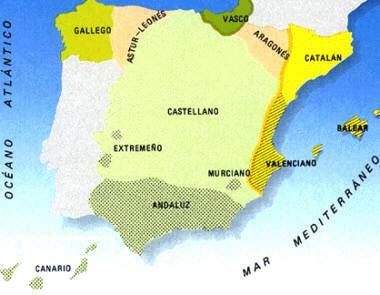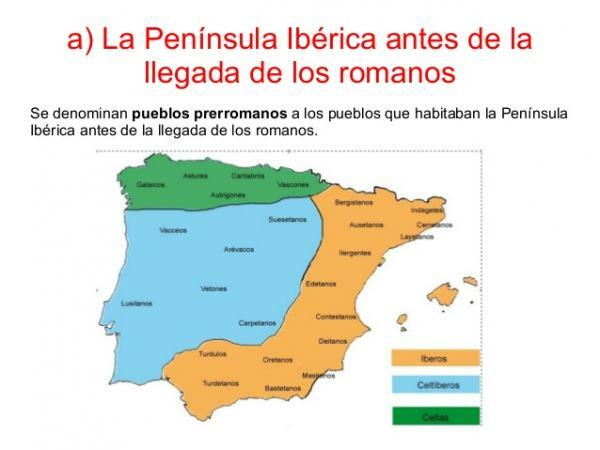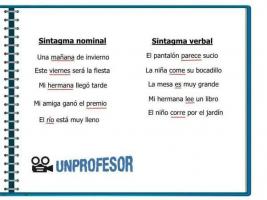Formation of Romance languages in Spain

Image: Cultureduca
The linguistic division that currently exists in Spain has not always been this way. The languages spoken in the different geographical points of the peninsula have experienced different stages, linguistic, social and political changes that have shaped and determined their morphology and grammatical system current. Each and every one of these languages have gone through a series of linguistic phases and have evolved differently due to different kinds of issues; from political, economic reasons to those that are purely linguistic.
In this lesson from a TEACHER, we will go back a little in time to get closer and know a little better what the Formation processes of Romance languages in Spain.
Before the arrival of the Romans to the Iberian Peninsula, we know that there were several peoples that populated the peninsula. We do not know as much about these pre-Roman peoples as we would like, however, some of them were more important for the current linguistic conformation. For example, it is known that
the iberos They inhabited the area of the Spanish Levant, the Tartessians are believed to have done the same in the south, the basques in the north and Celts in the northwest of the peninsula.In addition, Greeks and Carthaginians also played a linguistic role important. The linguistic influence of all these pre-Roman peoples can be clearly observed in some place names, such as, for example, the name of "Iberian Peninsula". We have also preserved some very valuable inscriptions that belonged to these pre-Roman peoples.

Image: Slideshare
The arrival of the Romans to the peninsula around the year 218 BC. C. It was an unprecedented event that influenced the subsequent linguistic development of our country. It is known by the name of "romanization" to the process by which the Romans colonized the peninsula, imposing their culture, their way of life, their laws, their customs and, above all, their language: Latin. The Roman influence on the peninsula was profound and lasted practically until the 5th century, which is when the fall of the Roman Empire took place.
From the hand of the Romans, Latin is established in the peninsula as the official language, since it was this that allowed the unification of the territories previously occupied by the different pre-Roman peoples. In this way, thanks to Latin, Hispanics could communicate with each other and, of course, with Rome, the economic capital of the empire.
For this reason, except for the Basque language, All the peninsular languages that we know today have in common their Latin origin since they all derive, in one way or another, from the language that the Romans brought.
From the the fall of the Roman empire, Romanized territories were disintegrated and the same happened with Latin. There came a time when each territory spoke a different Latin and they were not able to understand each other and it is at this precise moment that the different Romance dialects were born that later became the Romance languages that we know today.
This process, however, was not easy nor did it happen overnight. Keep in mind that on the peninsula They were also, from the year 711, the Arabs, who have left us countless words of Arabic origin that populate our Castilian language and are known by the name of "arabisms". Furthermore, at the time of the Reconquest of the northern Christian kingdoms, there were different Romance dialects: Catalan, Navarrese-Aragonese, Asturian-Leonese, Galician, Spanish or even Mozarabic.
Over the centuries, some of these Romance dialects were constituted in tongues, Thanks to royal policies and linguistic normalizations, one of the most important was carried out by the Castilian monarch Alfonso X the Wise, since during his reign Spanish was established as the official language of the Chancellery, which gave it a prestige and value that allowed its conversion into the language.
On the other hand, Catalan or Galician also became languages, as we know them today. However, the same did not happen with Astur-Leonese and Navarrese-Aragonese, which do not have the category of languages but rather are considered dialects. historical, since they come directly from Latin, as opposed to other current dialects, such as Andalusian, Extremadura or Canarian, which have their origin in the Castilian.

Image: Slideshare



